Have you ever wondered, “What are transients?…”
If so, you’ve come to the right place!
Transients are short bursts of energy in an audio signal, often occurring at the beginning of a sound, like a drum hit or a plucked guitar string.
They’re characterized by a high amplitude, sudden change in volume, and a brief duration.
Transients play a crucial role in music production, as they give sounds their unique character and help define the rhythm and groove of a track.
Properly managing transients can make a significant difference in the overall sound and energy of your mix.
In this article, we’ll dive deep into the world of transients and explore everything from shaping to advanced transient techniques.
We’ll also discuss how transients affect different instruments and genres, and share some super useful tips for getting the most out of your mixes.
So let’s get started…
Table of Contents
What Are Transients?
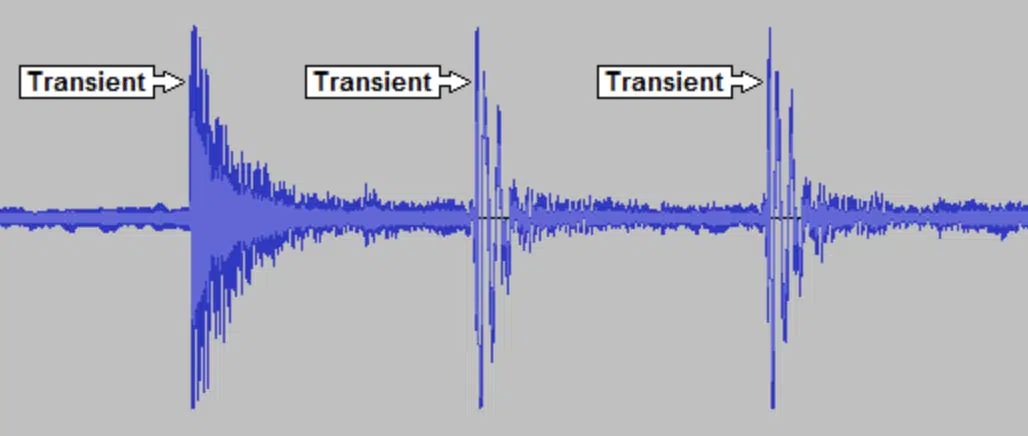
Transients are often described as the “attack” of a sound, the initial burst of energy that gives the sound its unique character.
They can range from subtle to dramatic, depending on the instrument and playing style.
For example, a soft fingerpicked guitar will have a gentler transient than a heavily plucked bass guitar.
Harmonic Content
The harmonic content of transients contributes to the overall timbre and texture of a sound, shaping the initial burst of energy that defines the character of each musical element within your mix.
- A snare drum hit 一 Might have a sharp, high-frequency transient.
- A kick drum 一 Will have a low-frequency transient with more low-end energy.
Understanding the HC of transients will help you make better decisions when it comes to processing and mixing your tracks.
Musical Instruments and Transients
Different instruments produce unique transients, which is why it’s essential to understand how they behave when recording and mixing.
For example, drums and percussion instruments generally have strong, pronounced transients.
Vocals and stringed instruments on the other hand might have softer, more nuanced transients.
Transient Shapers
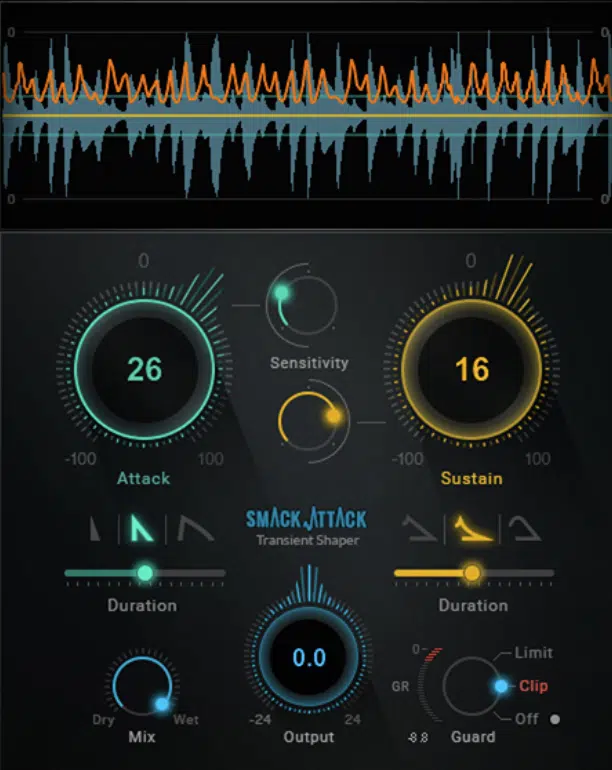
Transient shaping tools are audio processors designed specifically for controlling the transient nature of sounds. Transient shapers can be used to:
- Emphasize or tame transients
- Add punch to drums
- Create more dynamic mixes
They allow you to enhance or reduce the attack and sustain of a sound, giving you more control over its impact and character.
Tips for Shaping Transients
When using transient shapers, it’s essential to be mindful of the overall balance and dynamics of your mix.
Over-processing transients can lead to an unnatural sound, so use these tools sparingly and with purpose.
Also, consider using parallel processing techniques to blend the processed signal with the original for more natural results.
Drums
In the context of drums, transients are crucial for capturing the energy and impact of each hit, which helps to establish the rhythm and groove of a track.
In sound design, the role of transients is crucial in creating distinct and engaging sounds for various musical elements.
By carefully shaping and controlling the transients of various drum elements, you can create a cohesive and powerful drum sound that cuts through the mix.
-
Kick Drum

Transients play a crucial role in the impact and presence of a kick drum.
Properly shaping the transient can give your kick more punch and help it cut through a dense mix.
Try using a transient shaper to emphasize the attack, or add some saturation for extra harmonics and character.
-
Snare Drum
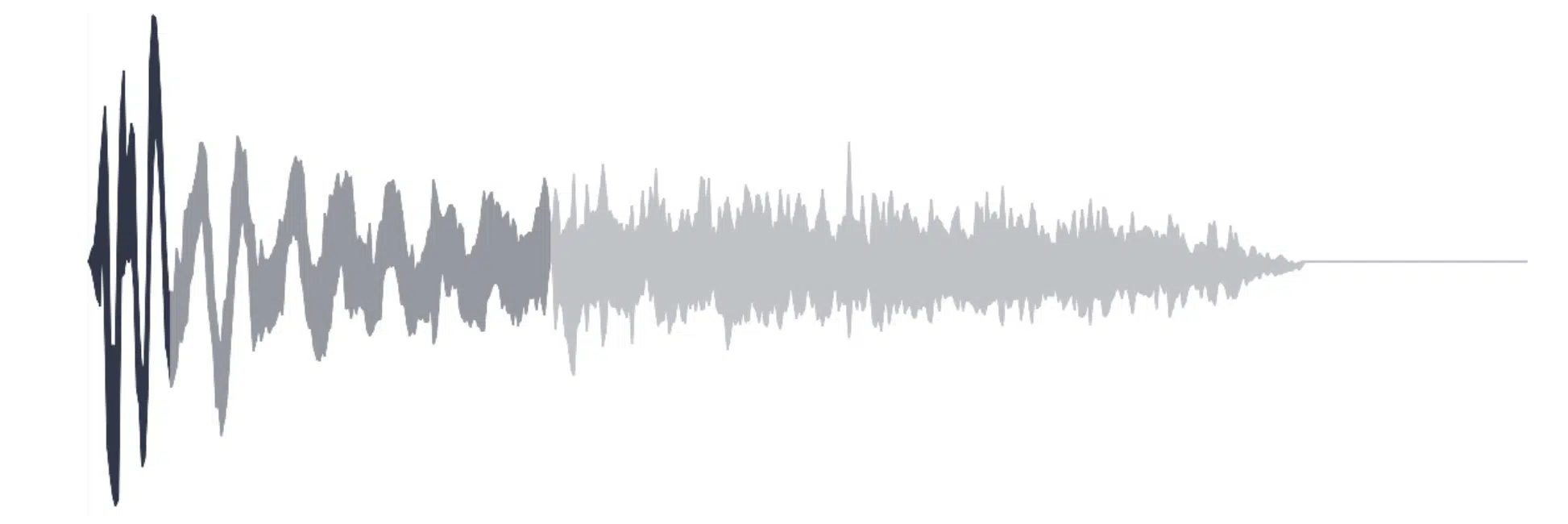
The snare drum often has a sharp, high-frequency transient that helps give it its distinct sound.
When mixing, pay attention to the transient’s balance with the rest of the snare drum body.
You might use a transient shaper to add more snap or apply parallel compression to emphasize the transient while maintaining the overall body of the snare sound.
Guitars
Guitars, both acoustic and electric, also benefit from proper transient management.
The initial attack and resonance of guitar strums and plucks contribute significantly to their character and presence in the mix.
Skillful manipulation of transients allows you to ensure that guitars sit well with other instruments while maintaining their unique sonic qualities.
-
Electric Guitar

Electric guitars can have a wide range of transient characteristics, depending on factors like:
- Playing style
- Pick attack
- Tone settings
When shaping electric guitar transients, consider the context of the mix and the role the guitar plays.
For instance, a rhythm guitar might benefit from a more controlled transient, while a lead guitar might need more presence and attack.
When shaping electric guitar transients, consider the context of the mix and the role the guitar plays.
For instance, a rhythm guitar might benefit from a more controlled transient, while a lead guitar might need more presence and attack.
-
Bass Guitar
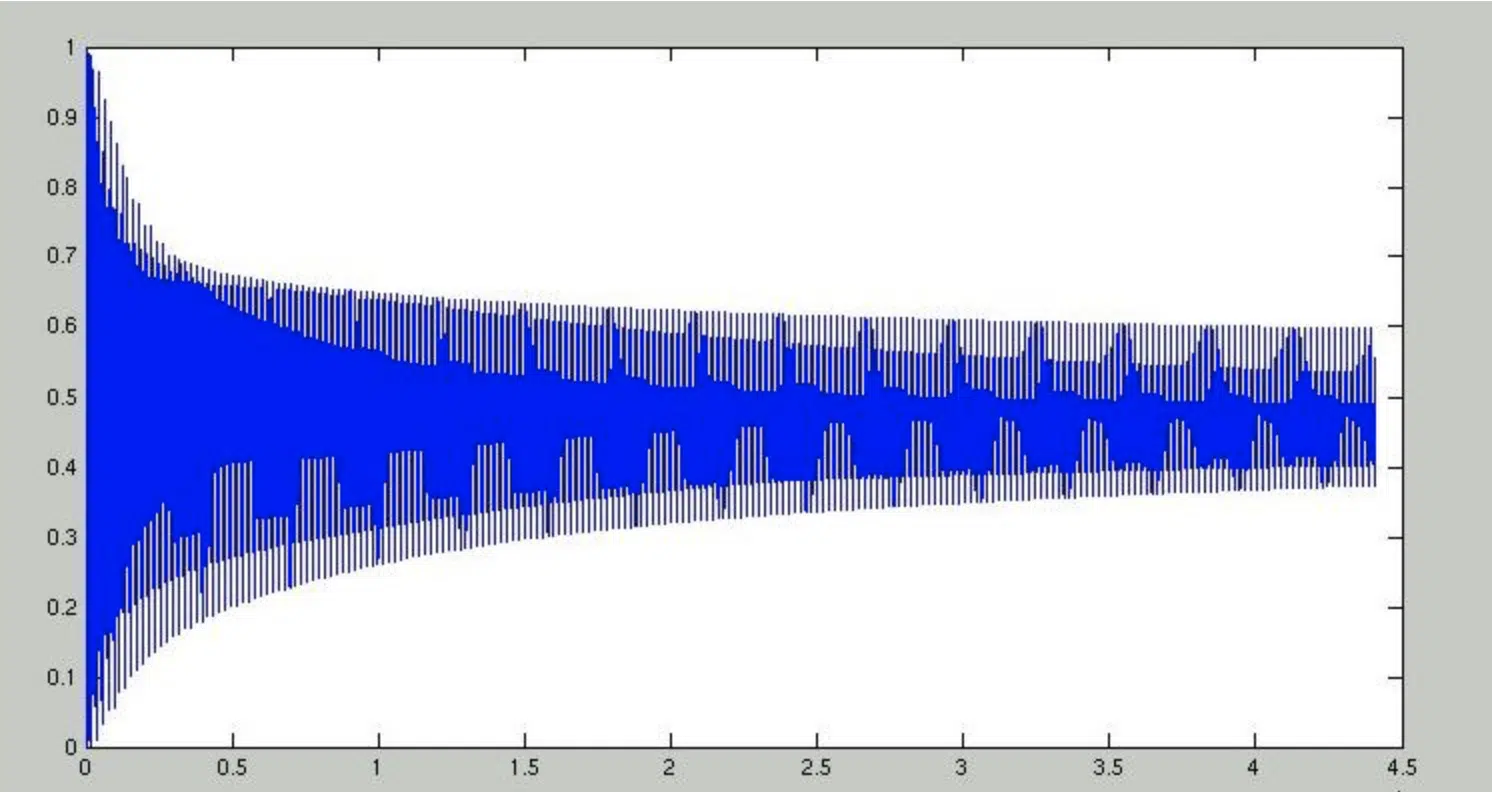
Bass guitars often have strong, low-frequency transients that can add power and impact to a mix.
However, excessive bass transients can cause issues with low-end clarity and headroom.
Use a transient shaper or compressor to tame the attack, or apply saturation to add harmonic content and help the bass cut through the mix.
Vocals
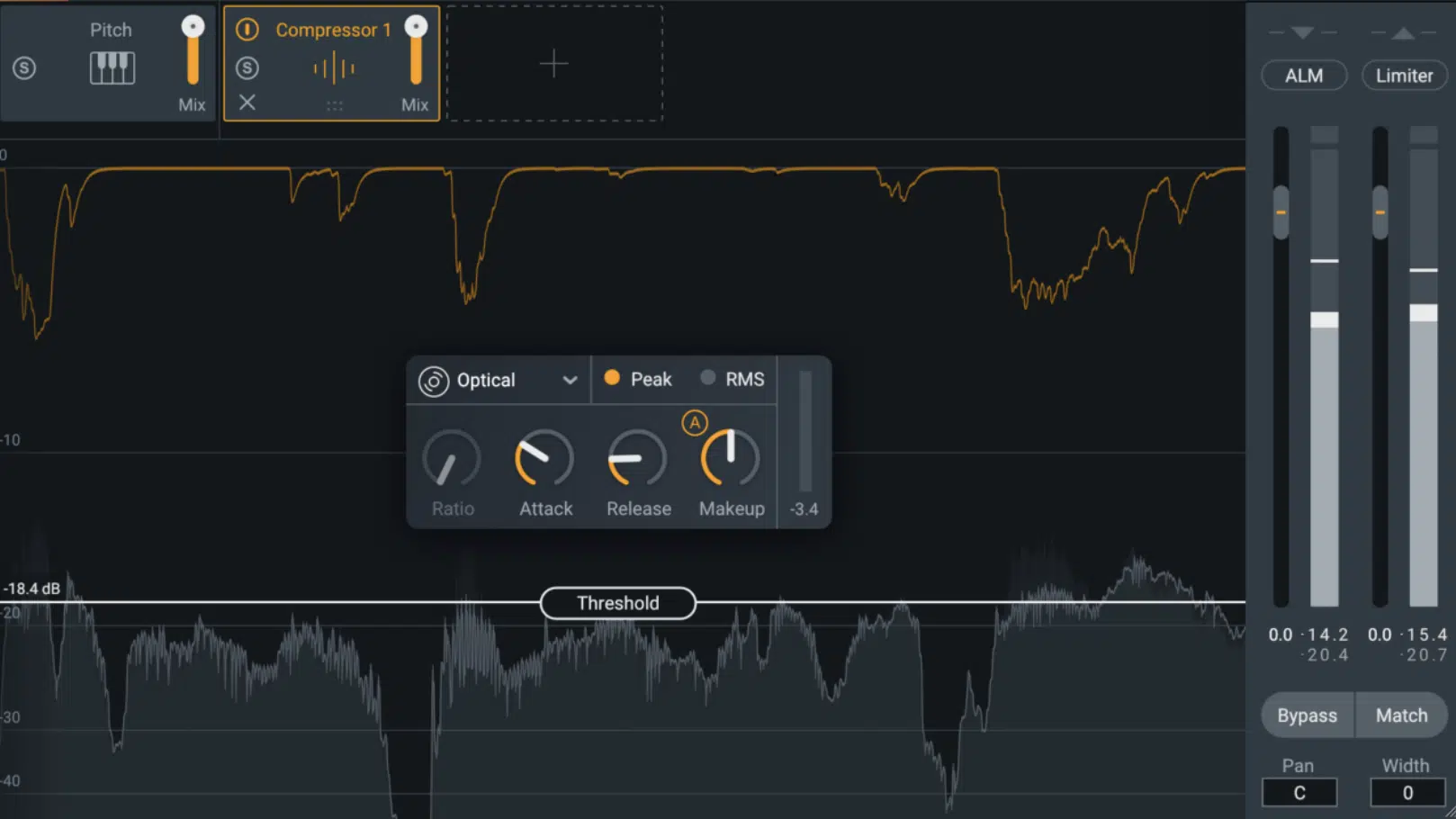
Vocal transients can be more subtle than those of other instruments, but they still play a significant role in the overall sound and clarity of a vocal performance.
When shaping vocal transients, focus on maintaining natural dynamics while enhancing the presence and intelligibility of the vocal.
Compression and saturation can help emphasize the transient while maintaining a balanced and dynamic sound in your own music.
Mixing Transients
When it comes to transients, the focus should be on achieving the right balance and impact for each sound in the mix.
Transient guests can refer to appearing and disappearing in the mix.
Compression
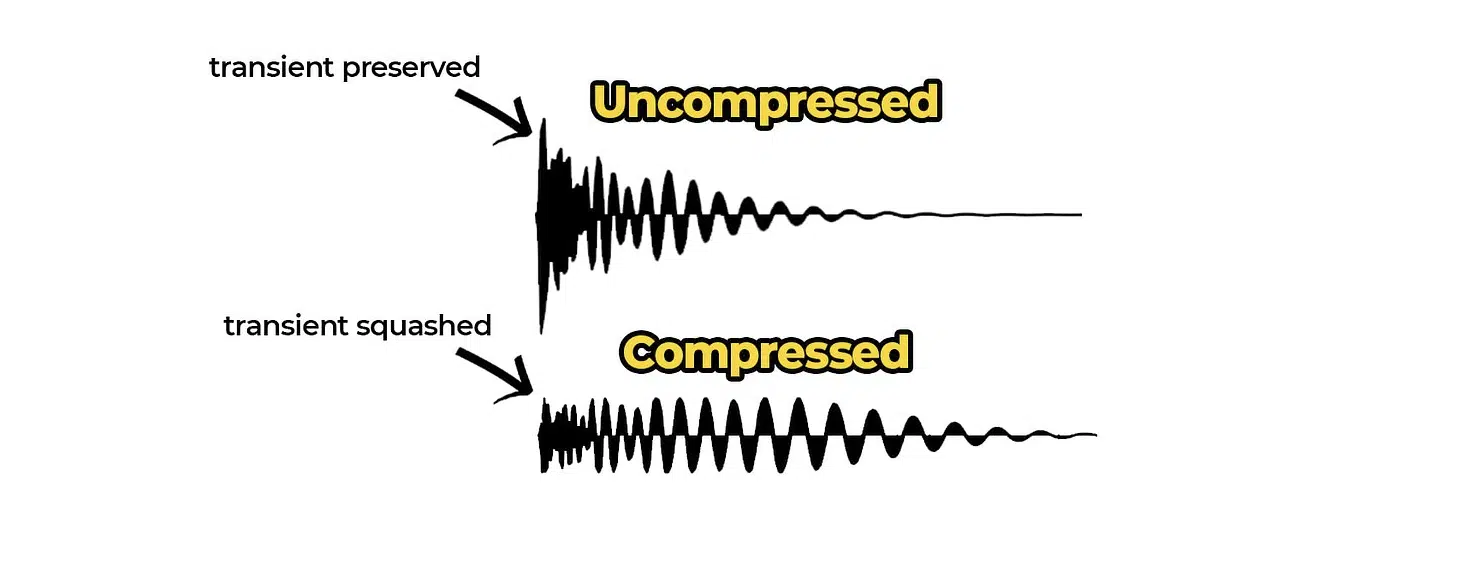
Compression is a commonly used technique for taming transients in a mix.
By adjusting the attack and release times, you can precisely shape the transient and overall dynamic response of a sound.
Parallel Compression
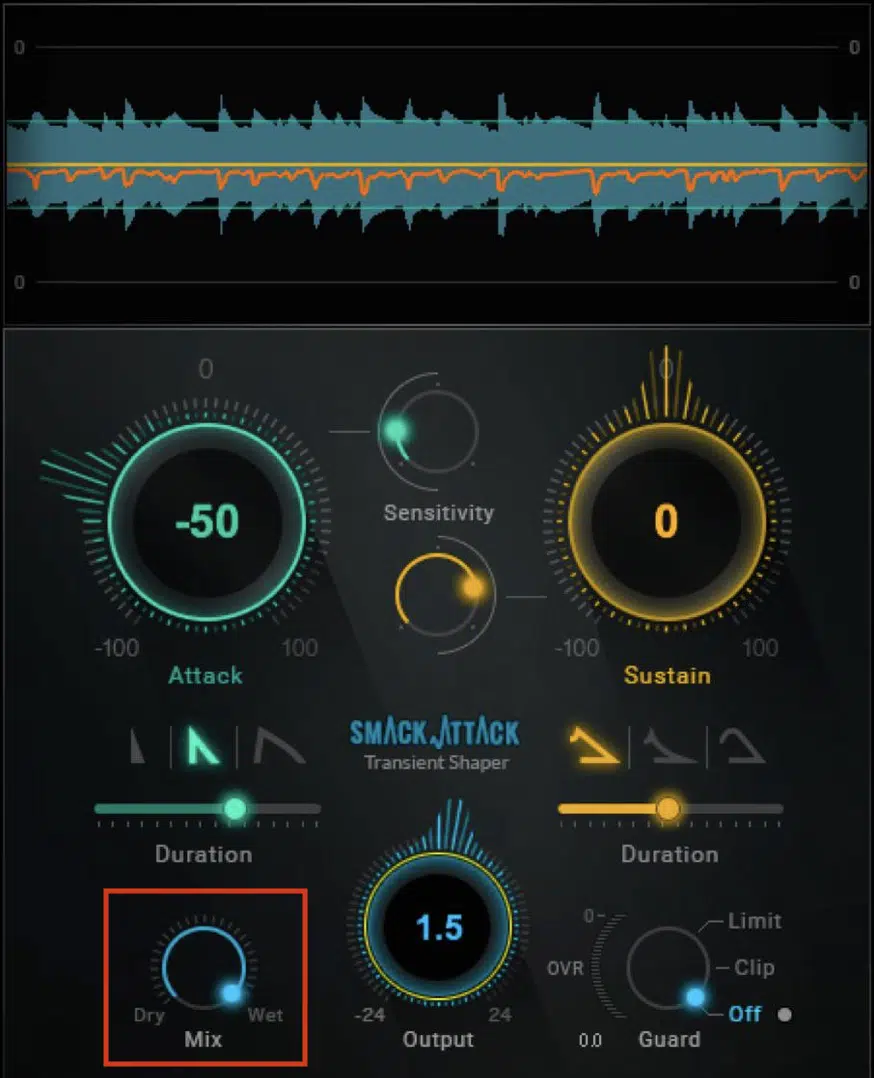
Parallel compression involves blending a heavily compressed version of a signal with the original, dry signal.
This technique can help emphasize transients without affecting the overall dynamics of the sound, giving you more control over the mix’s impact and presence.
Controlling Transients
To effectively control transients in your mix, it’s essential to understand the role of attack and sustain settings in shaping the sound’s dynamics.
By adjusting these parameters, you can achieve the perfect balance between punch and resonance for each individual element.
Attack
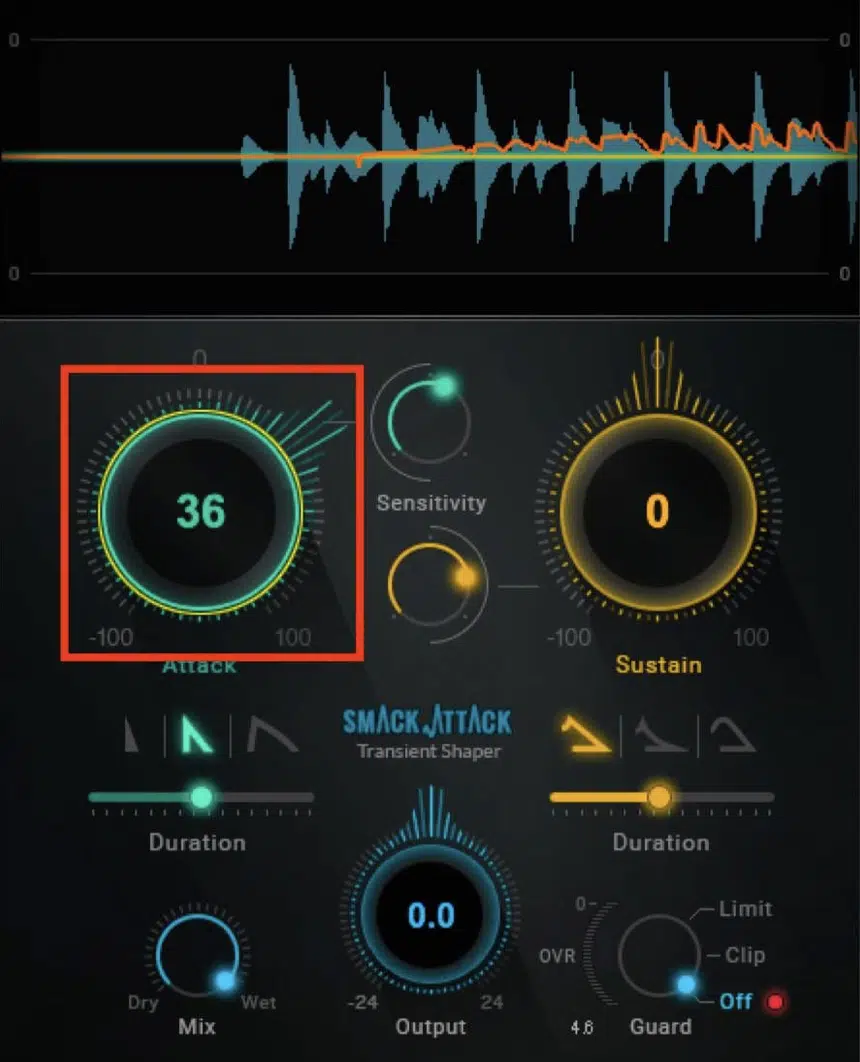
When working with transients, the attack time on a compressor or transient shaper is crucial.
- A fast attack time 一 Can help control aggressive transients.
- A slower attack time 一 Can emphasize the initial impact of a sound.
A well-calibrated attack time allows you to enhance or suppress the initial impact of a sound, giving you greater control over its presence and how it interacts with other elements in your mix.
Sustain
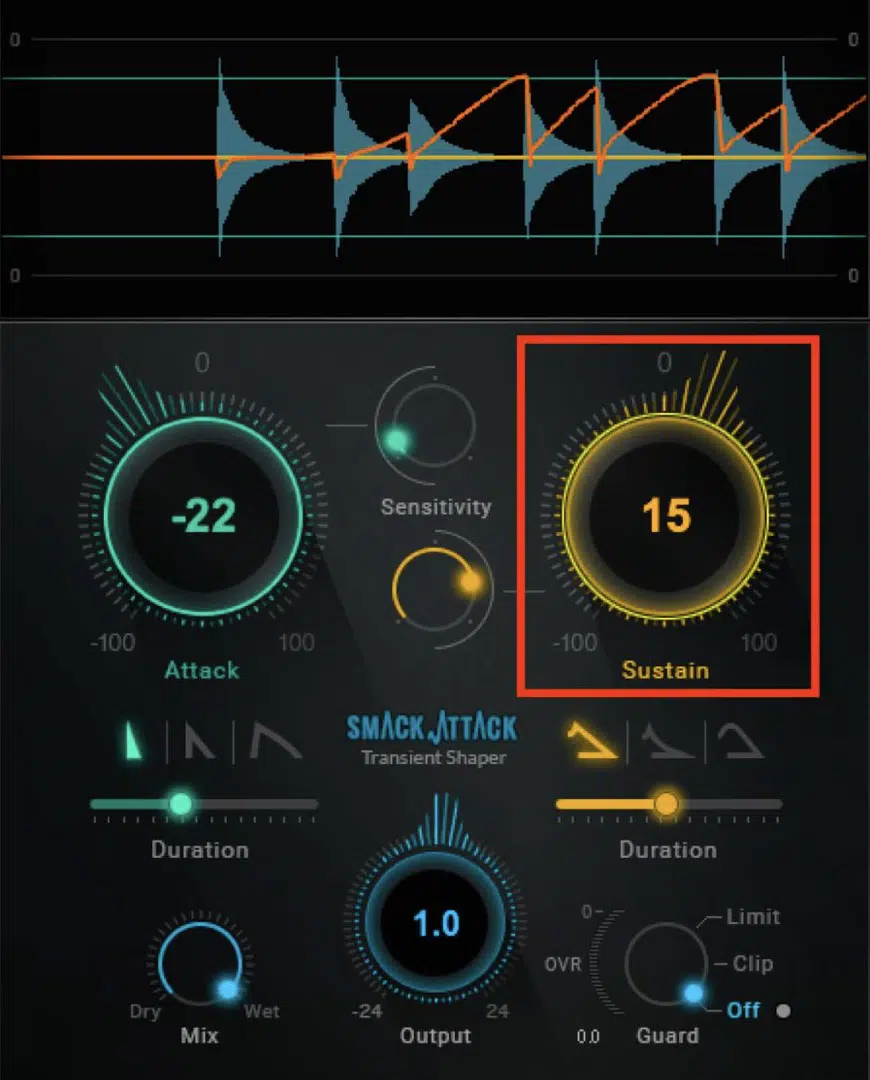
The sustain portion of a sound can also be shaped using transient processing tools.
- Reducing sustain 一 Creates a tighter, more focused sound.
- Increasing sustain 一 Emphasizes the body and resonance of an instrument.
By skillfully adjusting the sustain, you can modify the duration of a sound’s resonance.
This will help you create a mix that feels tighter, or more open, depending on the desired musical context.
Saturation
Saturation can be used to add harmonics and subtly shape transients, giving sounds more character and presence in a mix.
Experiment with different types of saturation to find the best fit for your track, and remember that a short burst goes a long way.
Mastering
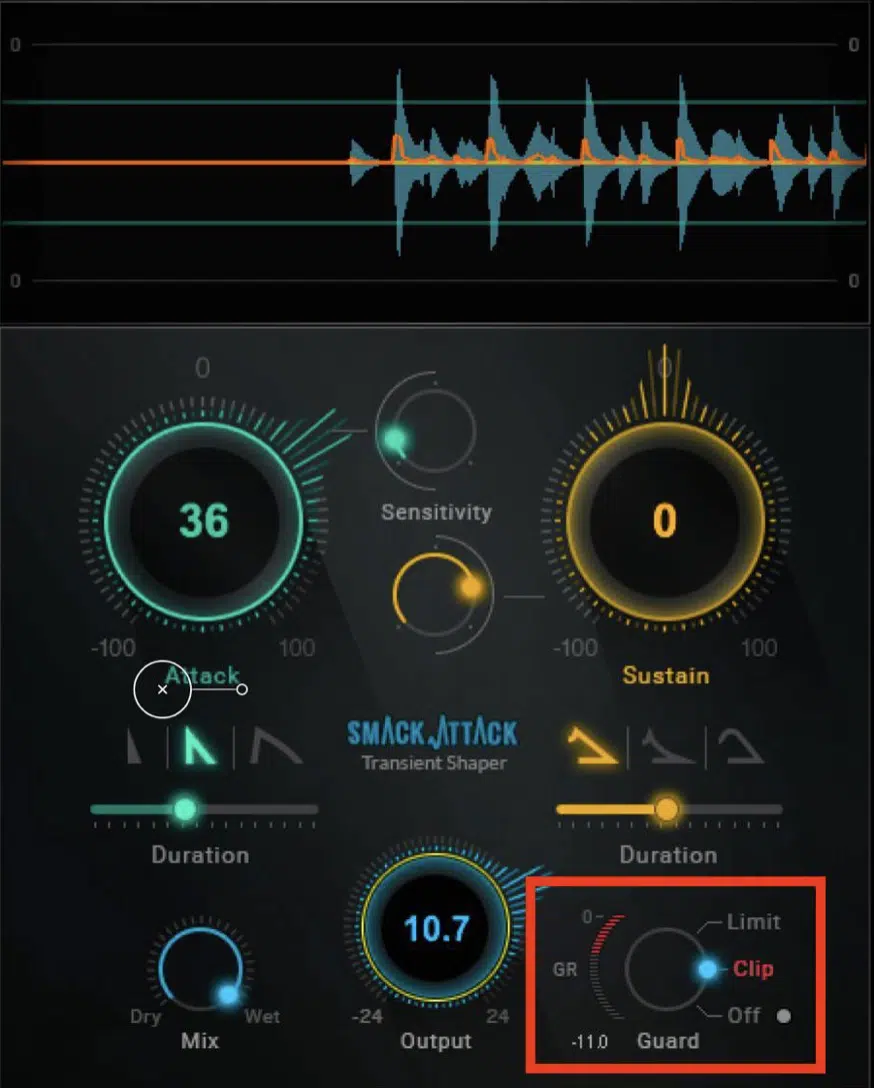
When mastering a track, it’s essential to maintain a balance between loudness and transient preservation.
Overly aggressive limiting can squash transients and reduce the impact of a mix.
Therefore, you should use a combination of limiting, compression, and transient shaping to achieve the desired loudness while maintaining the mix’s dynamic integrity.
Dynamic Range
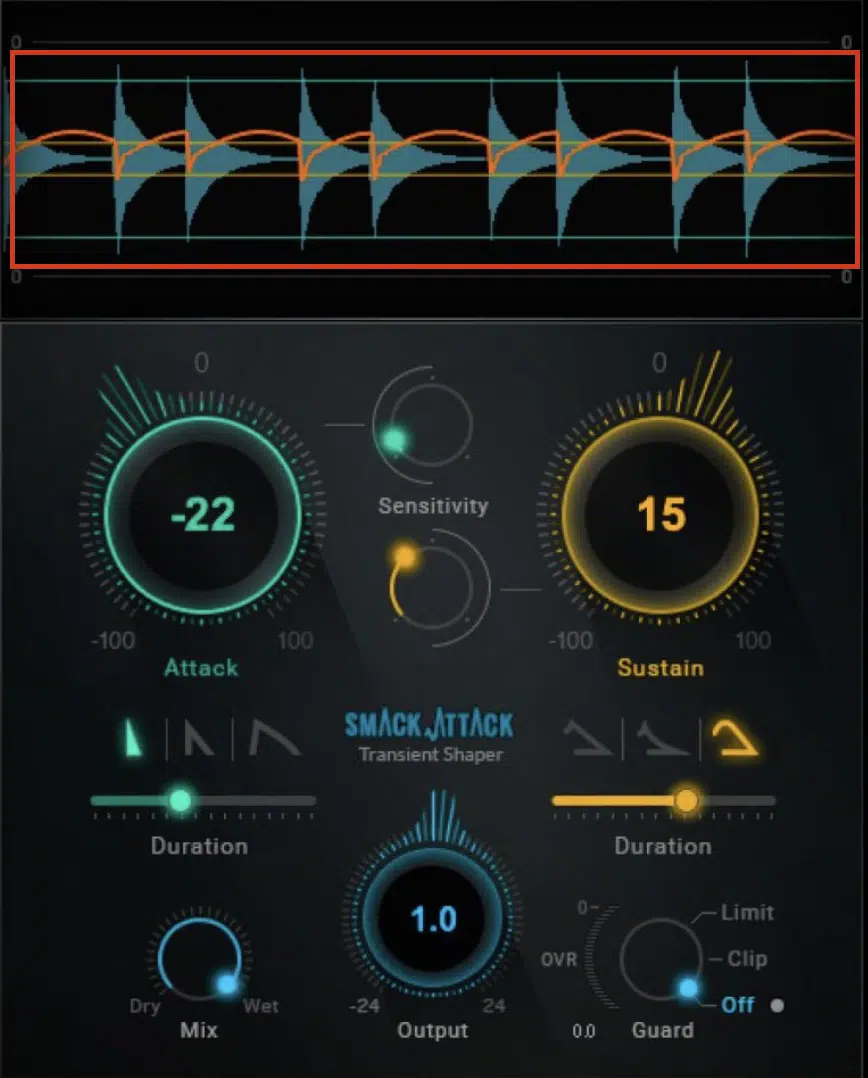
During mastering, pay close attention to the overall dynamic balance of the mix.
Ensure that transients are well-controlled and that quieter elements still have space to breathe.
A well-balanced mix will sound more lively and engaging, even at lower playback volumes.
Frequency Processing
In the mastering stage, consider how frequency processing can affect transients.
For example, applying a high-pass filter to remove unnecessary low-end energy can help tighten up transients and improve the overall clarity of the mix.
Be careful not to over-process, as excessive EQ adjustments can negatively impact the natural character and balance of the track.
Transient Tips for Specific Genres
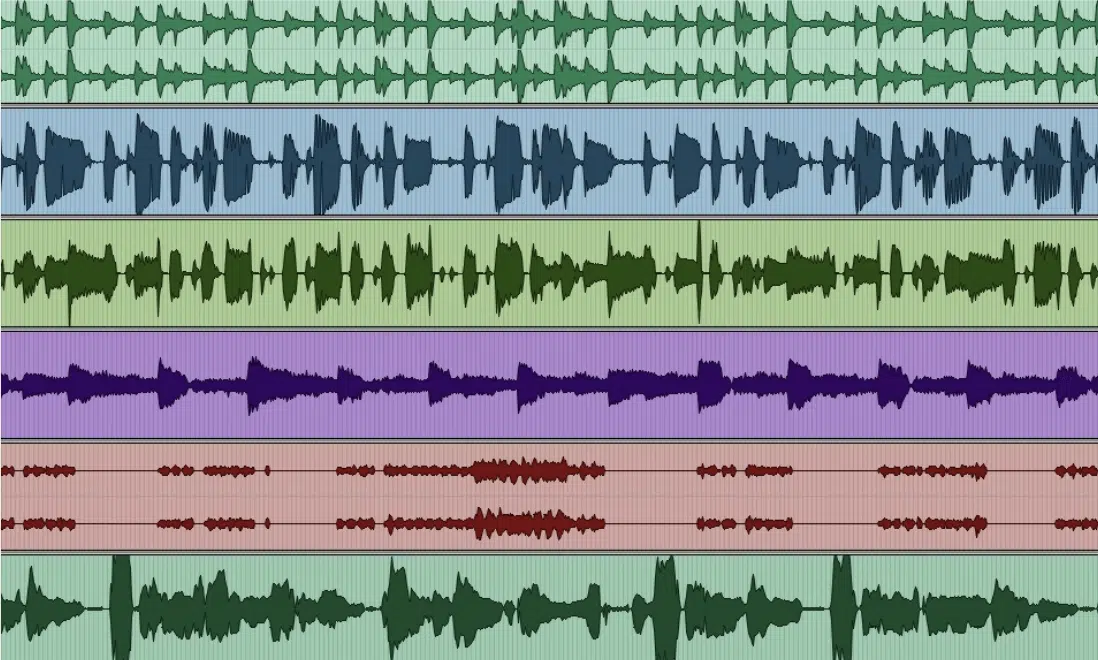
Understanding how transients function in different genres can help you tailor your approach to transient shaping and achieve the desired sonic outcome for each style.
Let’s examine some genre-specific tips for working with transients in electronic music, rock and pop, and hip-hop and R&B.
Electronic Music
Transients play a vital role in shaping the overall groove and energy of the track.
When working with synthesized drums and percussion, consider using transient shapers or compression to enhance the punch and impact of your sounds.
Incorporate layering and sound design techniques to create unique music and genre-specific transient characteristics.
Hip-Hop and R&B
Hip-hop and R&B tracks often rely on powerful, punchy drums and basslines to drive the rhythm.
Pay attention to the transient balance between the kick, snare, and other percussion elements, ensuring they have the right amount of impact without causing issues in the low end.
Experiment with saturation and parallel processing techniques to achieve a powerful, yet controlled transient response.
Rock and Pop Music
In rock and pop music, transients help define the rhythm section and provide a sense of excitement and energy.
Focus on achieving a balanced transient response between drums, guitars, and bass to create a solid foundation for your mix.
Use transient shaping and compression to control and enhance the attack of guitars and drums, ensuring they cut through the mix without overpowering the vocals.
Common Transient Problems
A common question I get asked, besides what are transients, is whether they’re inherently good or bad in music production.
The answer is that transients are neither good nor bad – they are a natural part of audio signals and play a crucial role in defining the character and dynamics of a sound.
The key is to manage and shape transients effectively to achieve the desired results in your mix.
Some common transient-related issues include:
- Excessive or weak transients
- Harsh high-frequency content
- Muddiness in the low end
Identifying and addressing these issues during the mixing process can greatly improve its overall clarity and impact.
To resolve transient issues, consider using tools like transient shapers, compressors, and EQ.
They can help you control and shape the attack and sustain of problematic sounds.
Additionally, experiment with techniques like parallel processing and saturation to achieve more natural and balanced results.
Advanced Transient Techniques
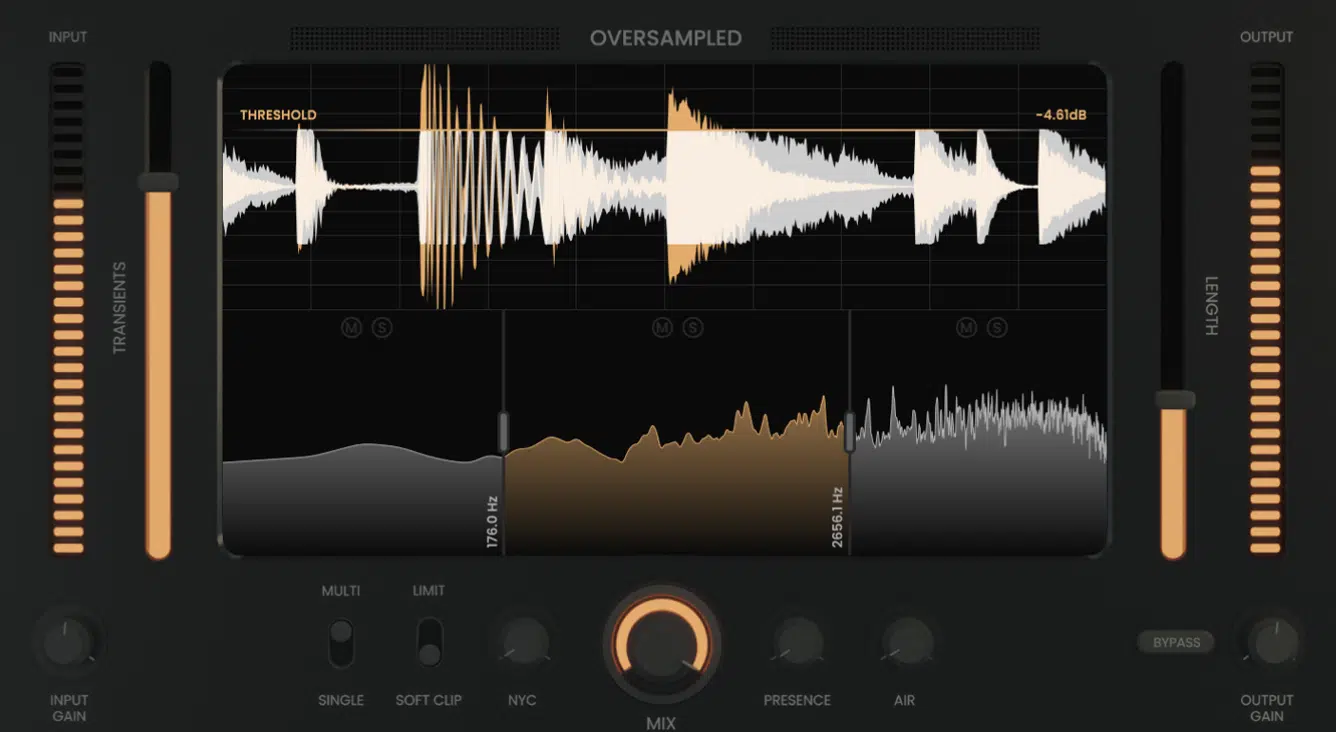
Beyond basic transient control, you can also use transient shaping tools and transient applications to creatively add interest and depth to your mix.
For example, you might use exaggerated transient shaping on a background element to create a unique, rhythmic texture.
Or, use a transient shaper to emphasize specific beats in a drum pattern.
Experimental Transient Shaping
Don’t be afraid to push the boundaries and experiment with unconventional transient shaping techniques.
You might discover unique sounds and textures that can add a fresh, innovative edge to your music.
Remember, there are no hard and fast rules in music production – it’s all about finding your own creative voice.
Final Thoughts
As you continue on your creative path, remember that understanding and shaping transients is a powerful tool.
It can help breathe new life and energy into your tracks, allowing them to stand out in a sea of sound.
Try to push beyond the conventional and embrace the potential of transients to enhance your sonic creations.
Experiment with the tools and techniques we’ve explored in this guide, and let your curiosity guide you to new heights.
Try adding transient shapers to our FREE Unison Essential Drum Loops pack to make them knock even harder than they already do (which is pretty crazy).
You’ll get 12 professional-quality, perfectly mixed drum loops for you to plug & play straight into your tracks.
Then, simply use the transient shaper of your choice in order to tweak these already perfectly crafted drum loops…
Just don’t be surprised if the neighbors come knocking on your door because they’ll be knocking so hard.
The world of transients is vast and filled with untapped possibilities – it’s time for you to make your mark and leave a lasting impression on the music landscape.
Until next time…







Leave a Reply
You must belogged in to post a comment.